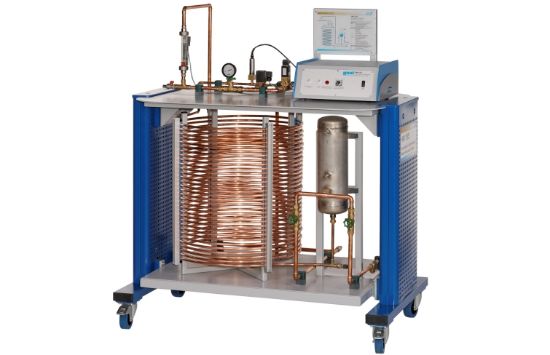The GUNT Water hammer in pipes is a significant problem in engineering as it can cause severe damage to piping, fittings, and system components. Water hammer is caused by the inertia effect of the flowing fluid being subjected to abrupt changes in velocity, such as rapid valve closure. Understanding the emergence of water hammer is crucial for designing safe pipework systems.
Product Features
- Simulates water hammer and pressure waves in long pipelines by closing a valve at the end of the pipe section
- Water hammer reflected as an inverted wave to the pipe's start, simulated by a pressure vessel with air cushion
- 60m long pipe section shaped as a coiled tube to save space while achieving sufficient reflection times
- Two solenoid valves included: one with constant closing time and one with adjustable closing time to study effects on water hammer
- Pressure oscillations measured by a pressure sensor and displayed using GUNT software
- Valve to adjust flow rate with system pressure and flow rate displayed digitally
- Safety valve protects the system against overpressure
Benefits
- Enables detailed study of water hammer phenomenon and pressure wave behaviour
- Provides practical insight into pipeline safety and design considerations
- Essential tool for engineering education and research on pipe system dynamics
Why Choose the GUNT Water Hammer in Pipes Trainer?
This trainer offers a realistic and space-efficient solution for visualizing and analyzing water hammer effects, helping engineers and students enhance pipeline safety and system design knowledge.

